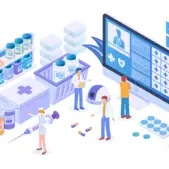The user experience (UX) design field continually evolves alongside the technologies it seeks to enhance. As innovative technologies such as generative AI, advanced chatbots, virtual reality (VR), augmented reality (AR), and mixed reality (XR) emerge, UX designers must craft intuitive and satisfying user experiences without relying solely on established best practices. This article emphasizes the significance of usability testing in developing emerging technologies and outlines why prioritizing user testing remains essential for product success.

The Evolving Challenges of Designing for Emerging Technologies
Though web and mobile design have matured significantly, emerging technologies continually reshape the UX landscape. Technologies like VR, AR, generative AI, and conversational AI present unique usability challenges that established design methods cannot always address.
Immersive technologies, such as VR and AR, transcend traditional two-dimensional screens, requiring entirely new design approaches. Without rigorous usability testing, critical UX issues may remain unnoticed until a product launch.
Conversational interfaces, driven by sophisticated AI such as ChatGPT or virtual assistants like Amazon Alexa and Google Assistant, similarly pose unique UX complexities. Designers and developers face challenges anticipating the diverse ways users naturally interact with these systems. For instance, interpreting nuanced conversational inputs or providing contextually appropriate responses demands careful usability evaluation.
Consider a scenario in which a family requests a “kid-friendly movie” through their voice assistant. Without thorough usability testing and contextual training, inappropriate recommendations could negatively impact the user experience. Designers must anticipate varied user interactions and test extensively to ensure reliable and intuitive performance.
The Essential Role of Usability Testing
Organizations launching new products in emerging technology domains must prioritize usability testing. With evolving interfaces and interactions, relying solely on existing design standards proves insufficient. Instead, iterative usability testing becomes crucial for revealing hidden UX issues, validating assumptions, and refining the user experience continuously.
Neglecting thorough usability testing can lead to delayed product launches, increased costs, and diminished user satisfaction. Conversely, integrating usability testing throughout development ensures emerging technologies are accessible, intuitive, and effective, maximizing user adoption and satisfaction.
At UpTop, we advocate for lean, iterative usability testing approaches, such as the R.I.T.E. (Rapid Iterative Testing and Evaluation) method. By rapidly prototyping, continuously gathering real-world user feedback, and swiftly refining designs, we ensure that products align closely with user expectations and market demands.
Our UX experts guide businesses through comprehensive usability testing processes, transforming insights into actionable design improvements. Whether launching innovative generative AI-driven applications, advanced conversational assistants, or immersive experiences, we ensure that your products consistently deliver exceptional user experiences and sustainable business outcomes.
Ready to enhance your product’s UX through robust usability testing? Let’s connect to discuss how our services can help you deliver exceptional digital experiences that drive results.


